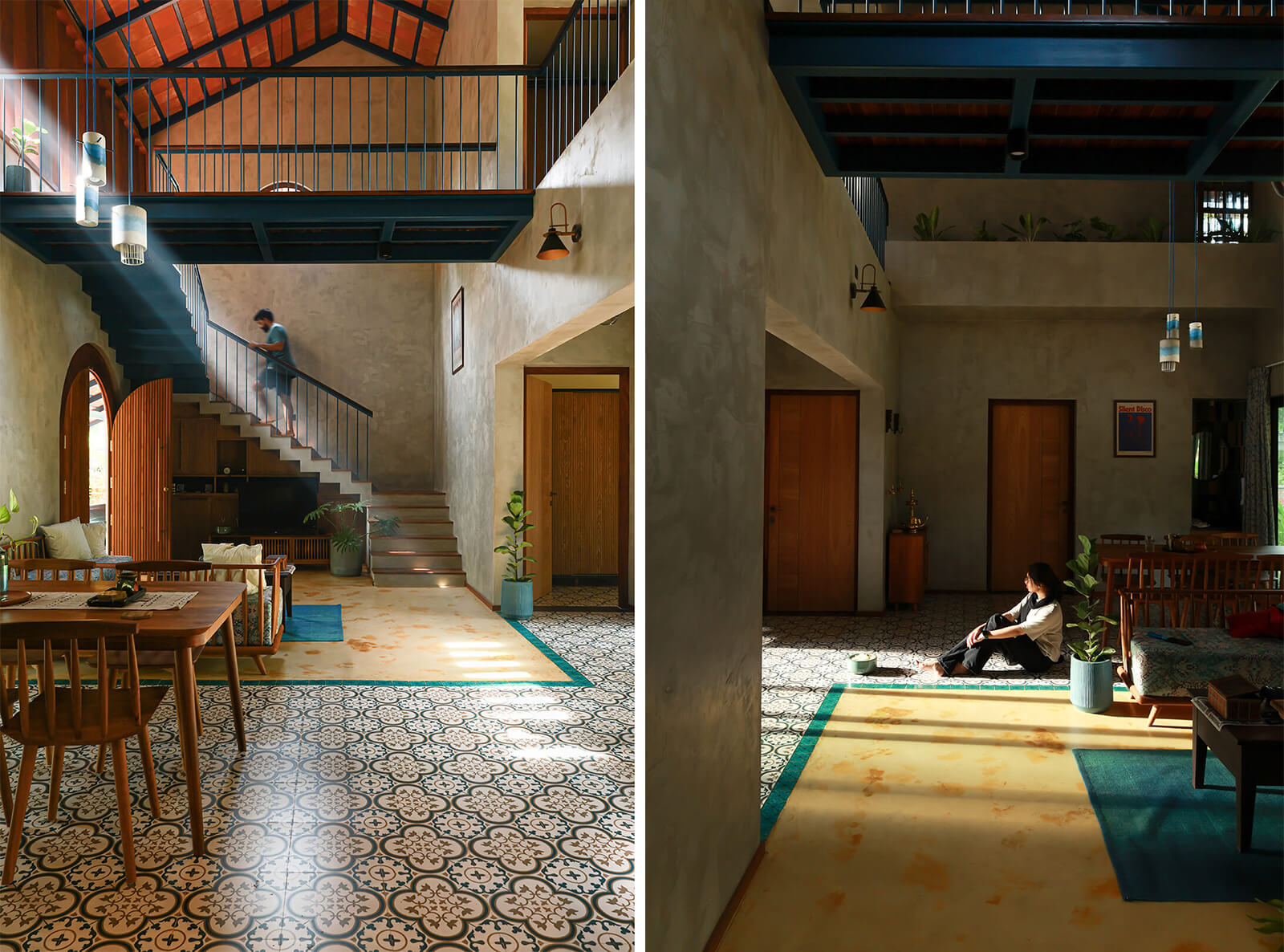Studio Renesa traces the cultural memory of Kerala's roots in a Pune home
by Alisha LadAug 29, 2024
•make your fridays matter with a well-read weekend
by Dhwani ShanghviPublished on : Jun 15, 2024
The port city of Kozhikode, along the coast of Malabar in Kerala, exhibits a rich history of trade from as early as antiquity. In the medieval period, it served as a crucial gateway to the South Indian coast for Chinese, Persian and Arab traders and later European colonisers, earning it the reputation of the City of Spices. This extensive interaction with diverse cultures led to a distinctive, multicultural architectural landscape that showcases the influences of its various trading and settler societies.
Traditionally, both domestic and religious architecture were codified under ancient architectural treatises basis the geographical, climatic and historical context. This rich tapestry of influences presents a spectrum of elements from which to craft a contemporary architecture that seamlessly blends historical elements with modern techniques, intending to reclaim the traditional while celebrating the present.
The Wabi-Sabi house is a private residence in Kozhikode with an Anglo-Indian design exhibiting elements from the traditional Nālukettu alongside the colonial bungalow typology. This 19th century colonial import emerged as both a cause and consequence of urban sprawls and represented a marker for health and prosperity. Distinguished by a spacious site, the British Bungalow typology was a composition of simple volumes carved out of a symmetric form, enclosing a symmetric spatial organisation.
The verandah faced the front garden and led to a central hall flanked by rooms on either side. Socially, the bungalow was designed to maintain the status quo and manifested gender, kinship and race/caste hierarchies spatially. Stylistically, the bungalow integrated local architectural elements with contemporary technology and materials. Similarly, the traditional courtyard houses of Kerela were laid out like detached buildings and distinguished themselves from the former as a courtyard house, enveloped by blocks containing the living spaces on the four sides of a rectangular plan.

Designed by Aslam Sham Architects, the plan of the Wabi-Sabi house appears as a reinterpretation of the bungalow typology, displaying a U-shaped footprint with outdoor living spaces spilling off its edges. A front verandah separates the garden from the double-height living area, wedged between a stairwell, two bedrooms and a kitchen on two sides.
As the volume shrinks on the third side of the living area, it appears to tunnel its way out to a garden at the rear of the house. The spatial organisation therefore discards both the symmetry and hierarchy of the bungalow typology. The atrium-like space of the living room is, in fact, evocative of the central open courtyard of the Nālukettu not just in terms of organisation but also its social quality. While this extroverted plan inverses the relationship between the indoors and the outdoors by pushing the open spaces to the periphery, it imitates the intimate relationship between the internal spaces of the traditional courtyard house.
Externally, the front elevation is an asymmetric visual narrative, mapping the evolution of the house typology from its traditional to its colonial to its contemporary expression. On the ground floor, the Poomukham (portico) and the ambal kumal (lotus pond) contrive a front verandah, which serves as an informal sit-out facing the garden.
The sloping tiled roof with its overhanging eaves, showcases an enduring sustainable response to the tropical climate, while Venetian blinds built from reclaimed wood, large glazed openings and port windows are a testimony to the colonial context.
Wabi-sabi, a Japanese concept, serves as the ethos of this project, embracing beauty in imperfections and transience. Internally a series of walls finished in lime plaster lends a robust, yet intimate disposition to the expansive volume of the living area, where light filtered through the blinds creates a playful chiaroscuro. The bold colours used on structural elements, flooring and upholstery balance the sobriety of the walls.
The Wabi-Sabi House typifies a ubiquitous design language employed for contemporary architecture with an arbitrary ethos. While the interiors may invoke the ambiguous and the often abused wabi-sabi aesthetic, its exploration is restricted to the lowest hanging fruit of the wabi-sabi tree, for it is neither imperfect not transient.
by Mrinmayee Bhoot Oct 10, 2025
Earmarking the Biennale's culmination, STIR speaks to the team behind this year’s British Pavilion, notably a collaboration with Kenya, seeking to probe contentious colonial legacies.
by Sunena V Maju Oct 09, 2025
Under the artistic direction of Florencia Rodriguez, the sixth edition of the biennial reexamines the role of architecture in turbulent times, as both medium and metaphor.
by Jerry Elengical Oct 08, 2025
An exhibition about a demolished Metabolist icon examines how the relationship between design and lived experience can influence readings of present architectural fragments.
by Anushka Sharma Oct 06, 2025
An exploration of how historic wisdom can enrich contemporary living, the Chinese designer transforms a former Suzhou courtyard into a poetic retreat.
 surprise me!
surprise me!
make your fridays matter
SUBSCRIBEEnter your details to sign in
Don’t have an account?
Sign upOr you can sign in with
a single account for all
STIR platforms
All your bookmarks will be available across all your devices.
Stay STIRred
Already have an account?
Sign inOr you can sign up with
Tap on things that interests you.
Select the Conversation Category you would like to watch
Please enter your details and click submit.
Enter the 6-digit code sent at
Verification link sent to check your inbox or spam folder to complete sign up process



by Dhwani Shanghvi | Published on : Jun 15, 2024
What do you think?